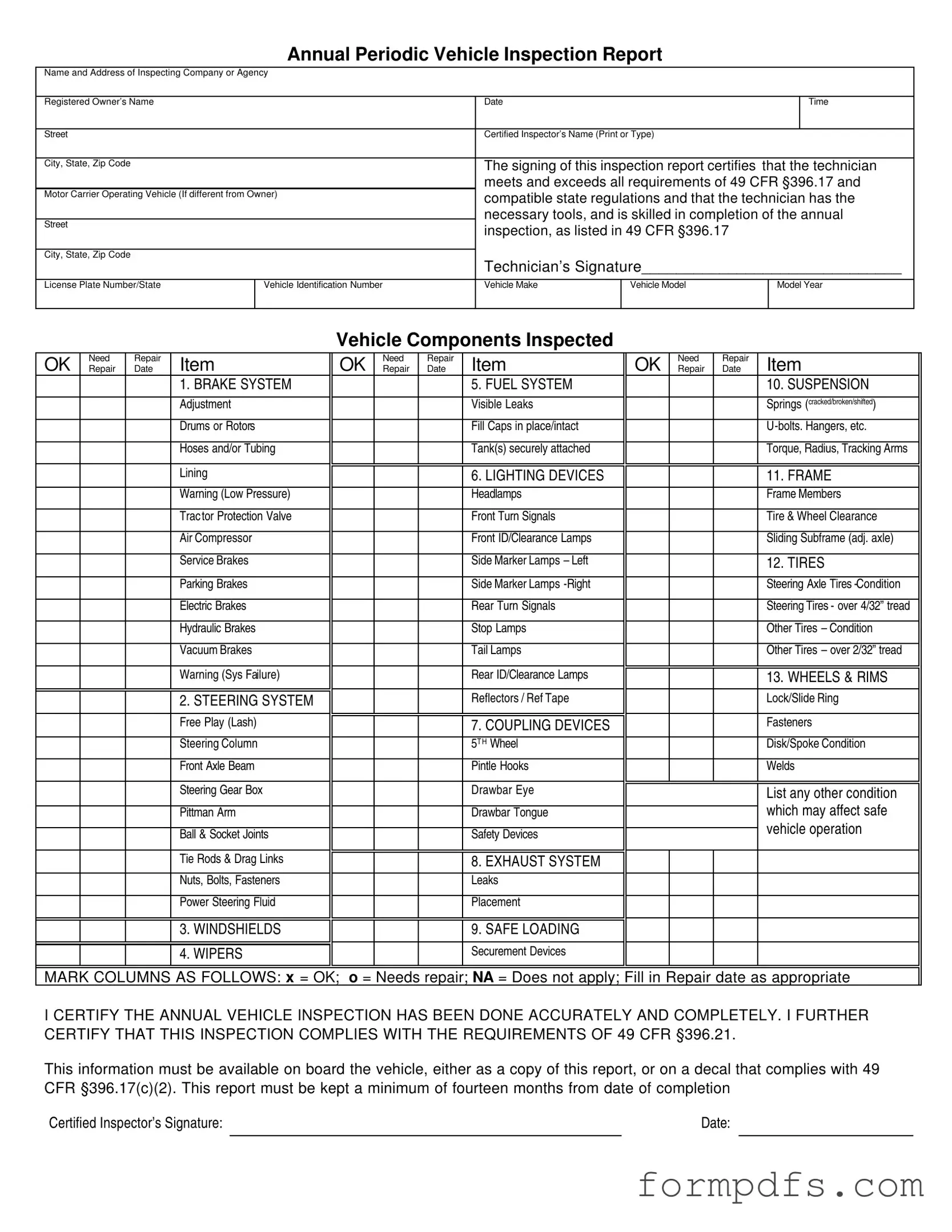What is the purpose of the DOT Vehicle Inspection form?
The DOT Vehicle Inspection form is used to document the annual inspection of commercial motor vehicles. It ensures that vehicles meet safety standards set by federal regulations. The form provides a record of the inspection findings and certifies that the vehicle is safe for operation on public roads.
Who is qualified to conduct the inspections?
Inspectors must meet specific qualifications outlined in federal regulations. They should understand the inspection criteria and be knowledgeable about the tools and procedures necessary for conducting thorough inspections. Qualifications may include completion of training programs or relevant experience in vehicle maintenance or inspection.
What information is required on the inspection report?
The inspection report must include details such as the name and address of the inspecting company, the registered owner's name, the date and time of inspection, the vehicle's identification number, and the inspector's signature. Additionally, the report should list all components inspected, noting whether they are okay or need repair.
How long must the inspection report be kept?
The inspection report must be retained for a minimum of fourteen months from the date of completion. This ensures that there is a record available for review if needed.
What should be done if repairs are needed?
If any vehicle components are marked as needing repair, the necessary repairs should be completed promptly. The repair dates should be recorded on the inspection report to maintain an accurate history of the vehicle's maintenance.
Is it mandatory to keep a copy of the inspection report in the vehicle?
Yes, it is mandatory to keep a copy of the inspection report on board the vehicle. This can be in the form of a physical copy of the report or a decal that complies with federal regulations.
What happens if the vehicle fails the inspection?
If a vehicle fails the inspection, it must not be operated until the necessary repairs are made and the vehicle passes a subsequent inspection. The safety of the vehicle is paramount, and compliance with regulations is required to ensure safe operation.
What is the significance of the inspector's signature?
The inspector's signature on the report certifies that the inspection has been conducted accurately and in compliance with federal regulations. This signature also indicates that the inspector is qualified to perform the inspection.
